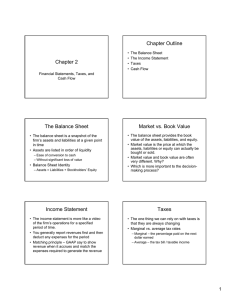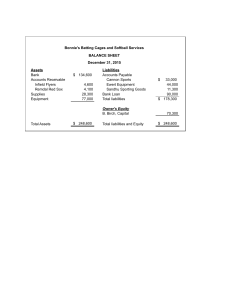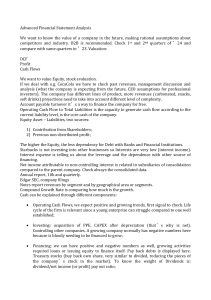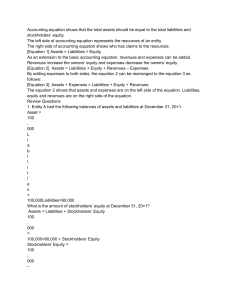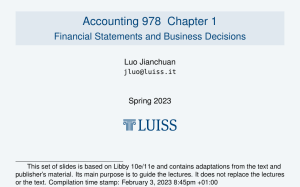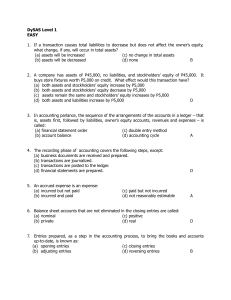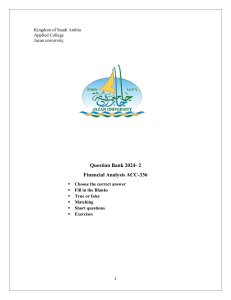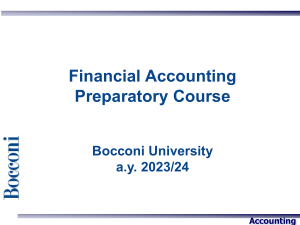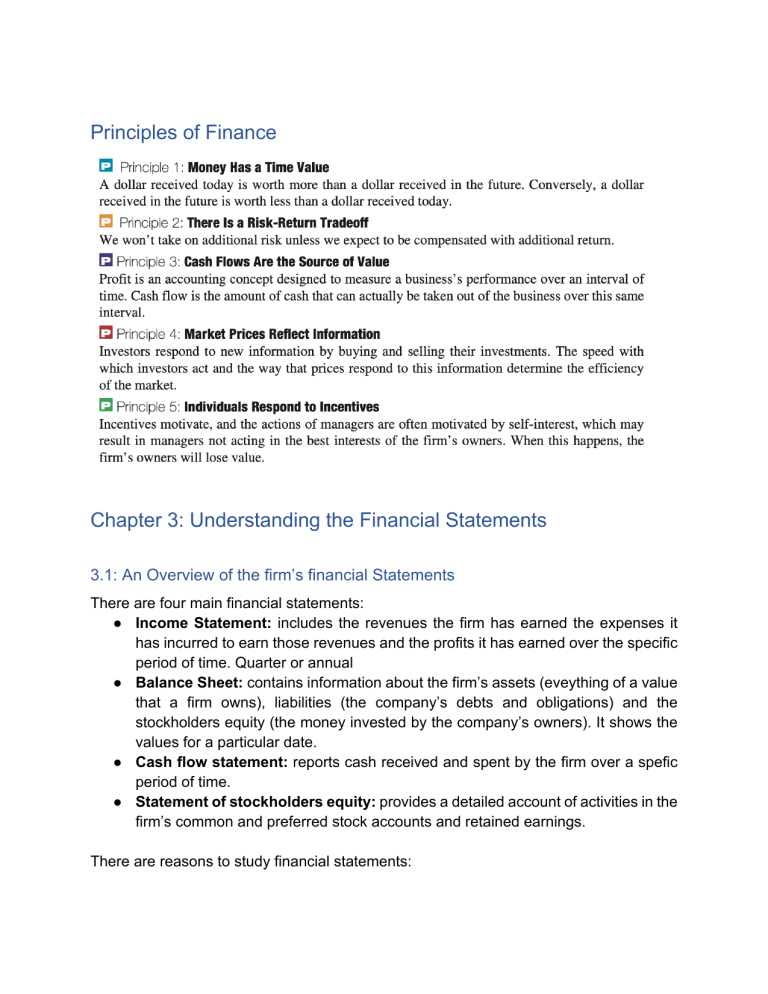
Principles of Finance Chapter 3: Understanding the Financial Statements 3.1: An Overview of the firm’s financial Statements There are four main financial statements: ● Income Statement: includes the revenues the firm has earned the expenses it has incurred to earn those revenues and the profits it has earned over the specific period of time. Quarter or annual ● Balance Sheet: contains information about the firm’s assets (eveything of a value that a firm owns), liabilities (the company’s debts and obligations) and the stockholders equity (the money invested by the company’s owners). It shows the values for a particular date. ● Cash flow statement: reports cash received and spent by the firm over a spefic period of time. ● Statement of stockholders equity: provides a detailed account of activities in the firm’s common and preferred stock accounts and retained earnings. There are reasons to study financial statements: ● Financial statement analysis: The basic objective of financial statement analysis is to assess the financial condition of the firm being analyzed. In a sense, the analyst performs a financial analysis so he or she can see the firm’s financial performance the same way an outside investor would see it ● Financial control. Managers use financial statements to monitor and control the firm’s operations. The performance of the firm is reported using accounting measures that com- pare the prices of the firm’s products and services with the estimated costs of providing them to buyers. ● Financial forecasting and planning: those statements describe the firm’s operations hence we build the financial forecasts and plans on those statements. There are principles we have to follow when creating the financial statements: ● Revenue recongition principle: the firm recognizes the revenue only when they deliver the service ● The matching principle: you attribute costs directly to the revenue you generate. You match the labor costs for example not at the end of the months but rather when you generate the revenue or make a sale that was dependent on that labor. ● The hisorical cost principle: most of the assets on the balance sheet are recorded as the company’s historical purchasing price. It does not reflect the market cost of the assets. ○ Some marketable securities and cash equivalents are reported on their lower end or the current valuation. The change in the value of those to reflect the current market price is called Making the Market. 3.2: The Income Statement ● ● Revenue (Sales) - Expenses = Profit Earnings Per Share 3.3: Corporate Taxes There is a dividend exclusion for corporate holdings to avoid double taxation. Not all dividends received from the corporation are taxeed similarly. 3.4: The Balance Sheet ● ● Total Assets=Liabilities + Shareholder Equity GAAP requires firms to report their assets at the historical costs. Except for cash and marketable securities which are reported at the lower end of their value. ● Gross Plant and Equipment: the sum of the original acquisition prices for plant and equipment still owned by the firm Accumulated depreciation: The sum of all all the depreciation expenses charged against the prior year’s revenues for fixed assets that the firm owns Net Plant Equipment: the depreciated value of the firm’s plants and equipment. Current Assets: consists of the firm’s cash plus theassets the firm expects to convert into cash within the year. Fixed Assets: firm does not expect to sell them within th eyear. Includes plant and equipment, land, and other investments that are expected to be held for an extended period of time. Current Liabilities: amount of athe money owed within the 12 months Stockholder’s equity: common stock + retained earnings. ● ● ● ● ● ● Net working capital refers to the liquidity of the firm. It is calculated by current assets-current liabilities. Historical Cost, Book Values, and Market Values ● Book values reflect the historical costs of acquiring assets ● Market value refers to the actual market price of the asset ● Book values are depreciated on the balance sheet due to the tax and accounting reasons ● There is a difference between them add usually the book value is less than the market value. 3.5: Cash Flow Statement Reports the changes in the cash balance over the period of the year. It reflects the cash changes and tracks the movement of the cash in the firm ● Change in cash: Ending - Beginning ● Source of Cash/Use of cash: activity that brings the cash in the firm and the activity that takes the money away from the firm.
